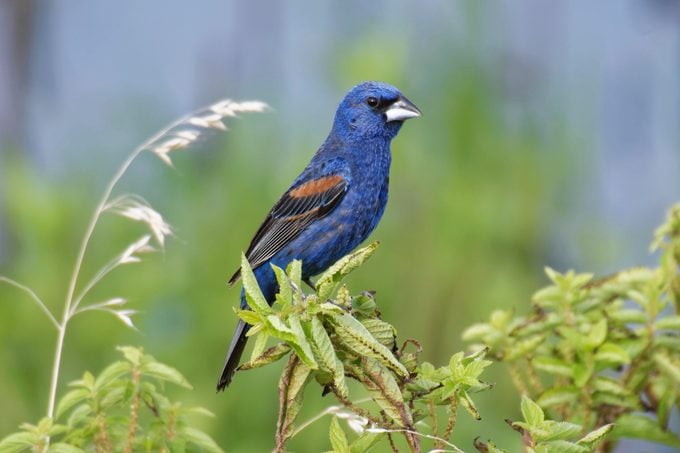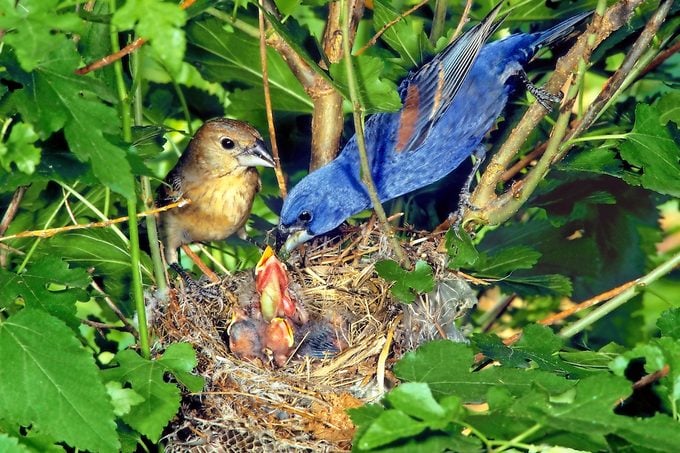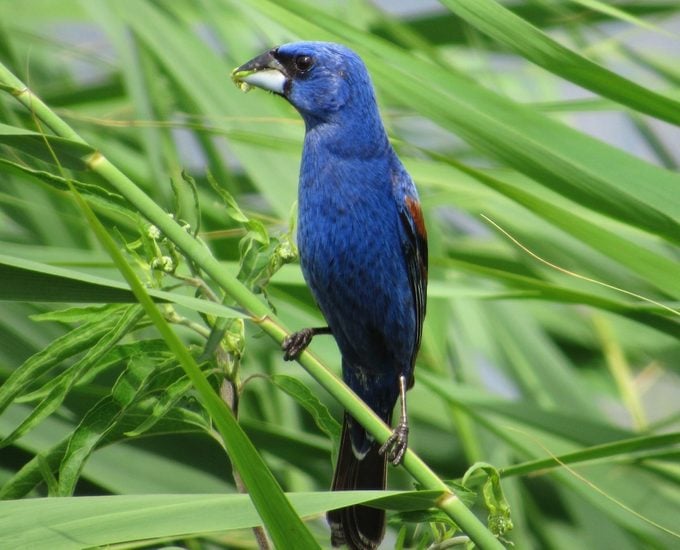Get to Know Gorgeous Blue Grosbeaks
Updated: May 22, 2024
Learn about the beautiful, but uncommon, blue grosbeaks, including where to find them, what they eat and how to identify the males and females.
Our editors and experts handpick every product we feature. We may earn a commission from your purchases.

Any sighting of a blue grosbeak is a cause for celebration, because these beautiful birds just aren’t that common and they can be difficult to attract. Although their nesting range covers most of the lower half of the country, spotting one is a rare treat. Look for them in the brush along roadsides and in old fields. “Most people see them only fleetingly during spring migration,” says Bubba Scales, who owns Wild Birds Unlimited in Gainesville, Florida. Your best bet may be a migratory hotspot.
Blue Grosbeak vs. Indigo Bunting
These blue birds are sometimes mistaken for indigo buntings, another blue Neotropical migrant that arrives at feeders in spring. Warm brown wingbars and a huge bill are what set blue grosbeaks apart. Learn more about the 5 grosbeaks backyard birders should know.
Female Blue Grosbeak
The female is not blue, but rather tawny brown. Learn how to attract rose-breasted grosbeaks.

Blue Grosbeak Nests
During the breeding season, they aren’t backyard birds—unless your backyard includes acres of the shrub-dotted field habitat this species seeks. Bubba, a self-described bird nerd, has feeders on his 10-acre property where he enjoys filming the birds. “Blue grosbeaks visited this feeder every day for four months!” he says.
Nesting season lasts all summer because they often raise two broods. The small nest, often utilizing snakeskins, is built just a few feet off the ground in a bush, briar patch or tangle of vines. Up to five nestlings may cozy up in the little cup. Here’s how to safely observe nesting birds.
Blue Grosbeak Song
Look for male birds singing their musical warbles from utility wires or the tops of small trees.
How to Attract Blue Grosbeaks

Blue grosbeaks may visit backyards anywhere within their range during migration. If a blue grosbeak does grace your feeder, take Bubba’s advice and serve its favorite food. “Number one is sunflower seed chips!” he says, along with whole sunflower seeds and millet. Then enjoy the visit of this uncommon bird for as long as it stays. Head up north to see pine grosbeaks.
What Do Blue Grosbeaks Eat?
Meaty grasshoppers make up the biggest part of this grosbeak’s diet, bolstered by other insects and seeds, which are plentiful near the nesting sites. Still, often only a single pair of grosbeaks lays claim to a large field.
Why Are They Uncommon?
No one knows why these beautiful birds aren’t more abundant. In 1834, John James Audubon wrote in The Birds of America, “Although this sweet songster spends the spring and summer in our southern states, it must be considered as a rather scarce bird there.”
In fact, the Cornell Lab of Ornithology reports that the blue grosbeak is so scarce that virtually all aspects of its biology are poorly known. But unlike some bird species, blue grosbeaks did not experience a decline in population in the last 50 years. There may be even more of these birds around today. So next time you see a blue grosbeak, savor the moment!




















